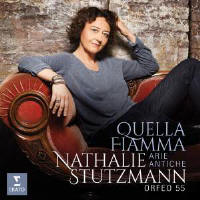Texte paru dans: / Appeared in: |
|
|
Outil de traduction ~ (Très approximatif) |
|
|
Reviewer: David
Cutler
As a rather nervous student
trying to impress a doubtful singing teacher, I first chose a song that
belonged to a book, Twenty Four Italian Songs and Arias of the 17th and 18th
centuries, edited by musicologist Alessandro Parisotti. Composers of these
arias and songs ranged from Caccini, Caldara, and Lotti to Handel. This
collection was designed not just to provide singers with some useful concert
numbers, but also to advance young singers in their bel canto training.
These items have been recorded by singers past and present, including
Gabriella Gatti, Ezio Pinza, and, perhaps most famously as far as historical
singers are concerned, Beniamino Gigli. He recorded a number of these in the
late 1940s with orchestra when he was approaching 60 years of age. They are
sung with love and affection and a lot of voice considering his age. However
they are historically uninformed and remote from 21st-century ideas, as
illustrated in the album under review. For example, Per la gloria is sung
with lovely head voice and with much emotion. Vittoria, mio core has
splendid contrast in the middle verses with its plangent tones, but
everything is aspirated. An earlier example is Amarilli. Recorded in 1939,
it is sung in a gorgeous half voice but with the notes lifted from below. It
also sounds crooned sometimes and simply does not match the modern view of
how these arias should be performed. And so it went on, with Richard Tucker,
Tito Gobbi, Carlo Bergonzi, and even an early recording by Cecilia Bartoli,
who does manage this repertoire much more effectively, with some spritely
singing and full-blooded Italianate tone in her early album with György
Fischer at the piano.
So, on to Nathalie Stutzmann.
Now in her early 50s, she leads her own ensemble or chamber orchestra, Orfeo
55, which has specialised in Baroque repertoire but has also tackled
Strauss, Tchaikovsky, and Schoenberg. This CD can be described as
revelatory, with the removal of all the bad old traditions. Stutzmann’s aim
is to sing them as originally written, as she has investigated where
Parisotti derived his material from, in a sort of reverse musicology. As the
booklet says, this has led to “orchestral versions with basso continuo which
brings a richness and a different perspective.” For Quella fiamma the
research, Stutzmann says, “allowed them to complete the cantata from which
Parisotti had taken only one aria,” also misattributing it to Benedetto
Marcello instead of the correct Francesco Conti. Stutzmann and her ensemble
are entirely convincing in the Baroque sound, and she provides rich and
virtuosic singing, whether in the above-mentioned speedy Vittoria, mio core
or the luscious love song Amarilli. The orchestra is a taut ensemble conducted in a spritely and spirited fashion throughout. These arias are now sharper, fleeter, and lacking in nostalgia, a good thing. Stutzmann knocks a minute off Gigli in many of the songs. The recording is quite close-miked, so we hear intakes of breath a bit too much. However we also hear the detail in the orchestration quite clearly. The album also breaks up the singing with a few purely orchestral renditions. Praise be, Erato provide text and translations in an interesting booklet. This disc is highly recommended for its originality as well as some excellent singing, bringing these songs to life for a new generation. | |
|
Support us financially by purchasing this disc from eiher one of these suppliers. Un achat via l'un ou l'autre des fournisseurs proposés contribue à défrayer les coûts d'exploitation de ce site. |
|
|
|
|
|
Cliquez l'un ou l'autre
bouton pour découvrir bien d'autres critiques de CD |
|




